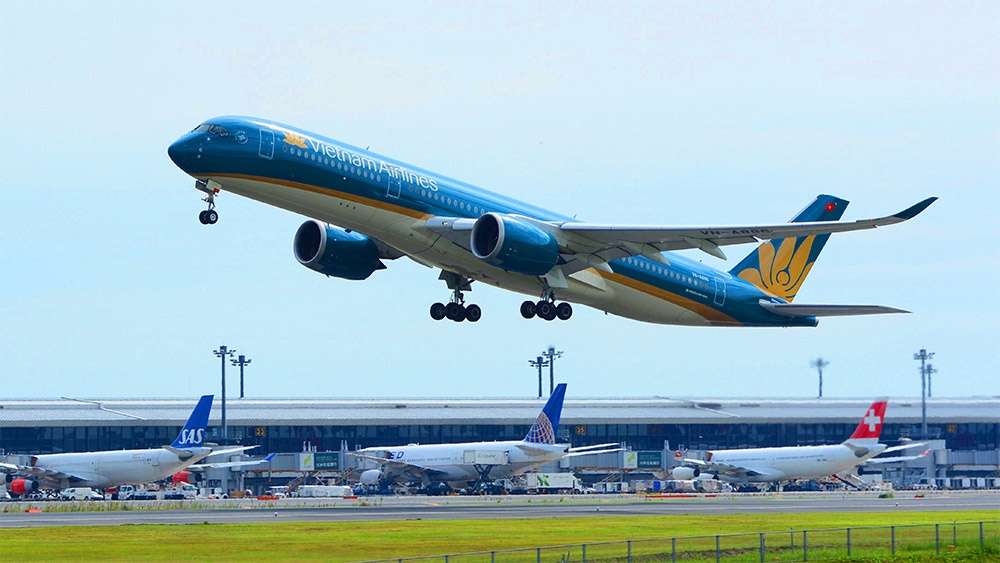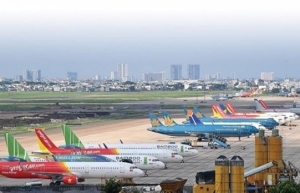Many risks remain for aviation recovery
Last year saw a recovery in many sectors and industries. Did you see the same in aviation?
 |
| Dinh Viet Thang, director of the Civil Aviation Authority of Vietnam |
In 2023, the aviation industry continued to be greatly affected by global unpredictable developments and consequences such as conflicts in regions around the world, aviation fuel prices increases, widening exchange rate differences, global recession, inflation, rising interest rates, and decreased travel demand.
Overall, air transport activities in 2023 basically met the needs of passengers. Aviation safety and security and service quality were maintained and improved, especially during the peak periods of the Lunar New Year and other holiday breaks.
The air transport sector, especially the domestic market segment, recovered and experienced growth compared to several years before, while the international market segment experienced a slower recovery rate but saw many positive signs. The total passenger transport market reached approximately 73 million passengers, up 31.4 per cent on-year.
Vietnamese airlines are gradually recovering step by step, with the total number of passengers carried out by them reaching approximately 56 million passengers last year, up 15 per cent on-year.
The domestic flight network is maintained and developed by airlines with 66 routes connecting Hanoi, Ho Chi Minh City and Danang with 19 local airports, carrying out more than 600 flights per day. International air transport activities continued to recover, with a gradually higher level of recovery in the last months of last year. And the rate of international passenger transport was estimated to be equivalent to 78 per cent compared to the time before the pandemic.
Vietnamese and foreign airlines have restored most of the routes connecting Vietnam with international markets, while expanding a number of new markets including Kazakhstan, Uzbekistan, Turkmenistan, and Mongolia.
A number of aviation-related policies were amended and changed in 2023. How have they changed the investment picture in the industry?
According to the International Air Transport Association (IATA), the aviation industry has gradually returned to profit. The number of tourists globally was also expected to increase to the same level in 2019.
At home, policies have been introduced to help domestic air carriers and the industry ease difficulties. These policies also facilitated investments in aviation infrastructure and acceleration of national important projects. Specifically, the government and the Ministry of Transport drastically directed to accelerate the progress of Long Thanh International Airport and terminal 3 at Tan Son Nhat airport. In August, important bidding packages for both ventures started construction.
Also last year, Vietnam Airports Corporation completed the expansion of Dien Bien Airport.
 |
How do you forecast the market’s recovery prospects this year?
According to IATA forecasts, the global aviation market will fully recover by the end of 2024. In particular, the Asia-Pacific market, the slowest in this recovery path, can stop losses and achieve a profit of about $1.1 billion. IATA also estimates that global airlines will achieve record revenue of $964 billion, of which, revenue from passenger transportation will be $717 billion, an increase of 12 per cent compared to 2023.
Air passenger transport in 2024 is estimated at 84.2 million, an on-year increase of 15 per cent and an increase of 6 per cent compared to 2019. Of the number, Vietnamese air carriers are expected to welcome about 61 million passengers, up 9.3 per cent and 10.9 per cent from 2019.
Total freight transport demand will reach 1.16 million tonnes, an on-year increase of 8.5 per cent and equal to 92.2 per cent compared to 2019.
Nevertheless, there are potential risks that may have a direct impact, including tightened monetary policies, high fuel prices, conflicts in many countries, risk of high-quality manpower shortage, and more.
What are the priorities for the Civil Aviation Authority of Vietnam to promote recovery this year?
This year, we set some priorities in the industry’s development policy. Firstly, continuing to research, evaluate, closely monitor the situation, and forecast market demand; coordinating with airlines and industry units to have timely solutions; and supplementing supply capacity on high-demand routes and key routes according to specific periods.
Secondly are solutions to support air carriers, focused on reducing some taxes and fees until the end of the year, and interest rate support policy in the aviation industry; working with aviation authorities to increase capacity; adding aircraft; and encouraging airlines to operate routes to international airports in other localities.
The third aspect is to direct Vietnamese air carriers to increase coordination with travel businesses and localities to implement tourism stimulus programmes, offering aviation-tourism package products, while increasing charter flights from new markets in South Korea, China, Japan, and others to tourist destinations in Vietnam to meet tourists’ needs.
We must effectively implement investment and sector planning, upgrade infrastructure, improve operational capacity, and boost flight management to best meet the needs of airlines and increasing travel needs.
The final factor is to review and improve regulations to help effectively support the recovery and development of the industry.
 A steep ascent ahead to boost interest in Vietnam’s aviation A steep ascent ahead to boost interest in Vietnam’s aviation |
 Domestic aviation industry poised for full recovery in late 2024 Domestic aviation industry poised for full recovery in late 2024 |
What the stars mean:
★ Poor ★ ★ Promising ★★★ Good ★★★★ Very good ★★★★★ Exceptional
Related Contents
Latest News
More News
- Global partnerships key to Vietnam’s IFC development (December 26, 2025 | 16:18)
- Vingroup pulls out of bid to invest in North-South high-speed railway (December 26, 2025 | 11:42)
- Strengthening supply chains through trade promotions and customs reform (December 24, 2025 | 14:00)
- PM orders investment model for North–South high-speed rail (December 22, 2025 | 17:43)
- LS Eco Energy to invest in Vietnam rare earth sector (December 22, 2025 | 17:31)
- Government moves to establish International Financial Centre (December 21, 2025 | 21:00)
- Vietnam's IFC to target global investment flows (December 21, 2025 | 18:00)
- Two national hospitals expand capacity with new facilities (December 20, 2025 | 09:00)
- Ha Tinh breaks ground on major Vingroup industrial and energy projects (December 19, 2025 | 18:24)
- EVN launches major power infrastructure projects nationwide (December 19, 2025 | 18:17)

 Tag:
Tag:





















 Mobile Version
Mobile Version